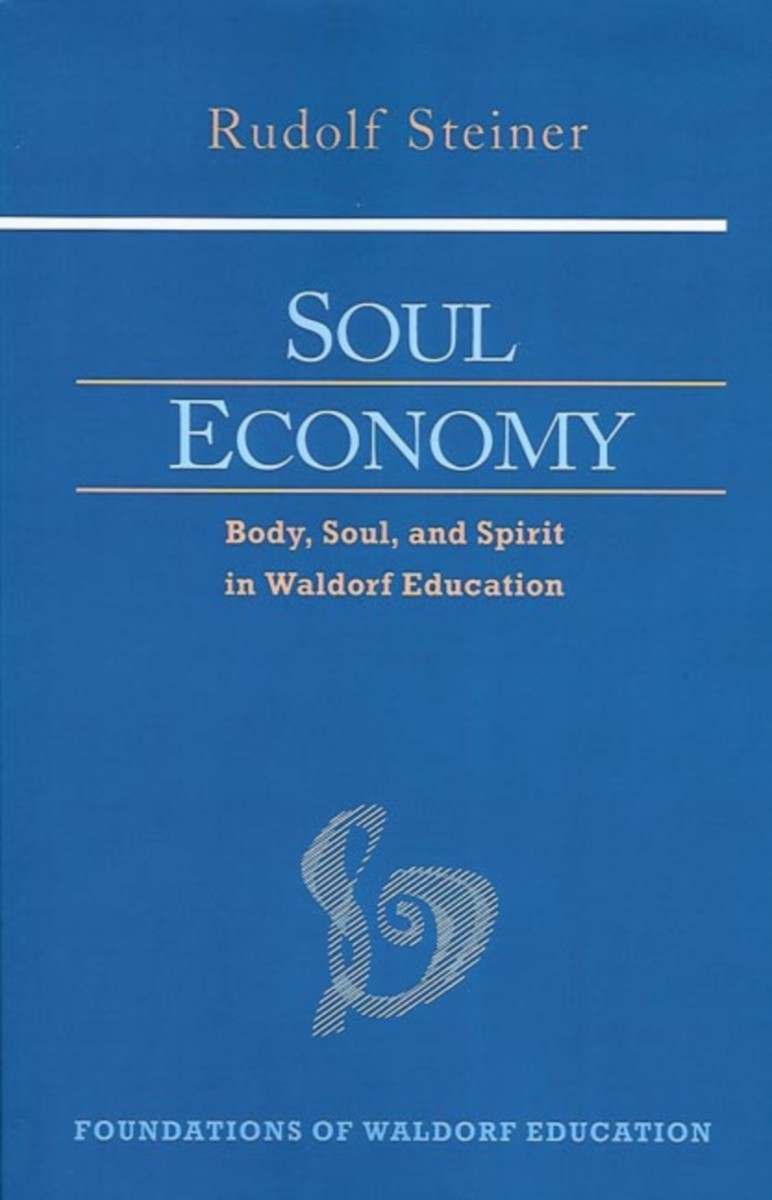Soul Economy
Body, Soul, and Spirit in Waldorf Education (CW 303)
- Publisher
SteinerBooks - Published
1st March 2003 - ISBN 9780880105170
- Language English
- Pages 384 pp.
- Size 5.5" x 8.5"
16 lectures, Dornach, Dec. 23, 1921-Jan. 5, 1922 (CW 303)
Today’s schools fill children’s heads with information instead of helping them develop their natural human faculties and capacities. They place too much stress on memory, leading to inner exhaustion instead of real learning for a healthy, fulfilling life.
The important lectures in this volume were given in Dornach, Switzerland, to leading educators, including many from England. As a result, he was invited to Oxford to expand on some ot the themes presented in these talks.
Steiner begins by placing Anthroposophy as the foundation for understanding the principles behind Waldorf education. In what follows, he describes an education based on the human as a continually developing being of body, soul, and spirit. From this perspective, Waldorf education depends on the teacher’s ability to observe and respond to each stage of a child’s development. Steiner shows how Waldorf education emphasizes the efficient use of children’s inner energies and how children can be nurtured through their natural stages of development by giving them just what they need at the right time—an approach that Steiner calls “soul economy.”
These detailed and accessible lectures give parents and teachers the keys to a much-needed renewal of education for our children and their future.
German source: Erziehung und Unterricht aus Menschenwesens. Eine Einführung in die anthroposophische Pädagogik und Didaktik. Weihnachtskurs für Lehrer (GA 303).
C O N T E N T S:
Editor’s Introduction
Introductory Note by Rudolf Steiner
1. The Three Phases of the Anthroposophic Movement (Dec. 23, 1921)
2. Education Based on Knowledge of the Human Being, part 1 (Dec. 24, 1921)
3. Education Based on Knowledge of the Human Being, part 2 (Dec. 25, 1921)
4. Education Based on Knowledge of the Human Being, part 3 (Dec. 26, 1921)
5. Health and Illness, part 1 (Dec. 27, 1921)
6. Health and Illness, part 2 (Dec. 28, 1921)
7. Children before the Seventh Year (Dec. 29, 1921)
8. The Waldorf School (Dec. 30, 1921)
9. Children from the Seventh to the Tenth Years (Dec. 31, 1921)
10. Children in the Tenth Year (Jan. 1, 1922)
11. Children from the Tenth to the Fourteenth Years, part 1 (Jan. 2, 1922)
12. Children from the Tenth to the Fourteenth Years, part 2 (Jan. 3, 1922)
13. Adolescents after the Fourteenth Year (Jan. 4, 1922)
14. Esthetic Education (Jan. 5, 1922)
15. Physical Education (Jan. 6, 1922)
16. Religious & Moral Education (Jan. 7, 1922)
Appendix: Questions & Answers
The Foundations of Waldorf Education
Rudolf Steiner’s Lectures and Writings on Education
Index
Rudolf Steiner
Rudolf Steiner (b. Rudolf Joseph Lorenz Steiner, 1861–1925) was born in the small village of Kraljevec, Austro-Hungarian Empire (now in Croatia), where he grew up. As a young man, he lived in Weimar and Berlin, where he became a well-published scientific, literary, and philosophical scholar, known especially for his work with Goethe’s scientific writings. Steiner termed his spiritual philosophy anthroposophy, meaning “wisdom of the human being.” As an exceptionally developed seer, he based his work on direct knowledge and perception of spiritual dimensions. He initiated a modern, universal “spiritual science” that is accessible to anyone willing to exercise clear and unbiased thinking. From his spiritual investigations, Steiner provided suggestions for the renewal of numerous activities, including education (general and for special needs), agriculture, medicine, economics, architecture, science, philosophy, Christianity, and the arts. There are currently thousands of schools, clinics, farms, and initiatives in other fields that involve practical work based on the principles Steiner developed. His many published works feature his research into the spiritual nature of human beings, the evolution of the world and humanity, and methods for personal development. He wrote some thirty books and delivered more than six thousand lectures throughout much of Europe. In 1924, Steiner founded the General Anthroposophical Society, which today has branches around the world.


